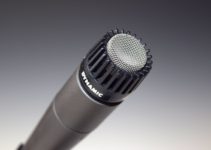There is a lot of confusion surrounding the topic of DACs and Amps. Which one should you buy? What’s the difference? In this comprehensive guide, we will answer all of your questions and help you decide which product is best for you. We will start by discussing what DACs and Amps are, and then move on to comparing and contrasting the two products. Finally, we will provide some tips on how to choose the right DAC vs Amp for your needs.

What is a DAC (digital-to-analog converter)?
A DAC is a device that converts digital signals into analog audio signals. This is important because most of our music today is in the form of digital files, such as MPthree and WAV. An Amp, on the other hand, Amp-lifies the signal so that it can be heard through a speaker or headphone.
The main difference between a DAC and an Amp is that a DAC takes care of the decoding process while an Amp simply amp-lifies the signal. This means that you don’t need an Amp if you are using a DAC with headphones, but you do need a DAC if you are using speakers.
What is an Amp (amplifier)?
An Amp, or amplifier, is a device that increases the power of a signal. It is important to note that an Amp cannot create sound – it can only amplify the sound that is already there. This means that you need a source material (such as music) in order to hear anything through an Amp.
Amps are often used with speakers, as they can provide more power than what most headphones can deliver. However, it is also possible to use an Amp with headphones, provided that the headphones have a high enough impedance rating.

DAC vs Amp Guide: The Definitive Answer
Digital-to-Analog Converters, or DACs, and Amplifiers, or Amps, are two of the most important pieces of equipment in any audiophile’s arsenal. But which one should you buy? This guide will help you decide.
First, let’s talk about DACs. A DAC takes a digital signal—like the ones produced by your computer, phone, or tablet—and converts it into an analog signal that can be played through your audio system. They come in all shapes and sizes, from tiny USB dongles to large standalone units. The type of DAC you need depends on the type of device you’re using to play music. If you have a laptop or desktop computer, you’ll need a DAC that plugs into your USB port. If you have an iPhone or Android phone, you’ll need a DAC that uses a headphone jack.
Once you have a DAC, you need to choose an Amp. An Amp takes the analog signal from the DAC and boosts it so it can be played through your speakers or headphones. Amps come in all shapes and sizes too, from tiny portable Amps to huge monoblocks. The type of Amp you need depends on the type of speakers or headphones you’re using. If you have bookshelf speakers, you’ll need an amp with enough power to drive them. If you have over-ear headphones, you’ll need an Amp with a high enough output voltage to drive them.
How do DACs and Amps work together to improve sound quality?
The main purpose of a DAC is to convert a stream of binary data into an audio signal that can be amplified and played through speakers. The quality of the DAC obviously has a lot to do with the overall sound quality. A good amplifier will also improve the sound quality by providing clean power and better control over the speaker drivers.
By combining a good DAC with a powerful amplifier, you can get significantly better sound than you would from either component on its own. This is why a good quality audio system will often have a DAC, an amplifier, and loudspeakers all working together.

If you’re looking to improve the sound quality of your computer-based music listening, then it’s definitely worth considering upgrading to a good DAC and Amp setup. There are a lot of great options available, so take your time and do some research to find the right components for your needs. You won’t be disappointed!
What are the benefits of using a DAC and Amp?
There are many benefits to using a DAC and Amp, including: better sound quality, improved clarity and definition, increased power and volume, and a more immersive listening experience. By using a DAC and Amp together, you can get the most out of your music collection and really enjoy those tunes!
A DAC (digital to analog converter) takes the digital information from your computer, phone, or other device and converts it into an analog signal that can be sent to a power Amp. The Amp then amplifies the signal and sends it to your speakers or headphones. This process results in better sound quality overall, as well as improved clarity and definition. Additionally, using a dedicated DAC and Amp setup can provide more power and volume than you would get with just a standard headphone jack. And finally, using a DAC and Amp together can create a more immersive listening experience – making it feel like you’re right there in the studio or concert hall!






